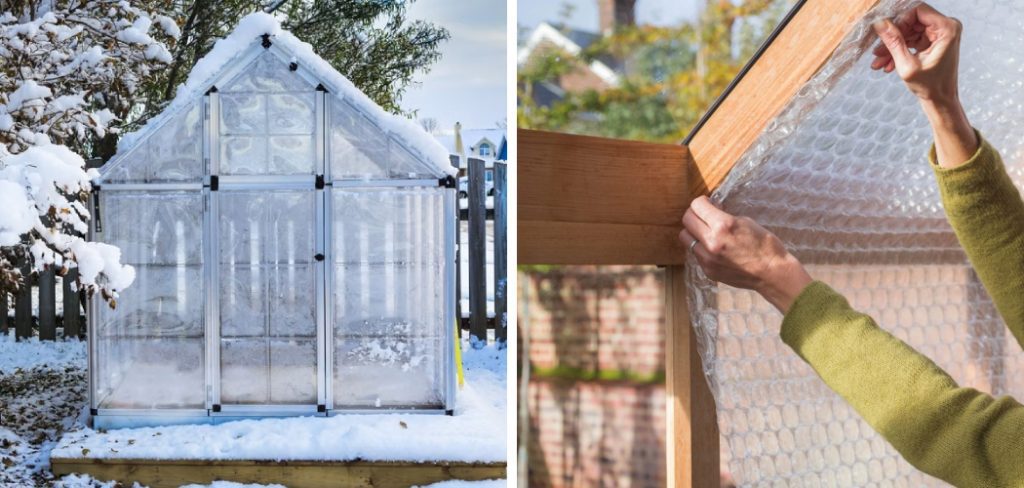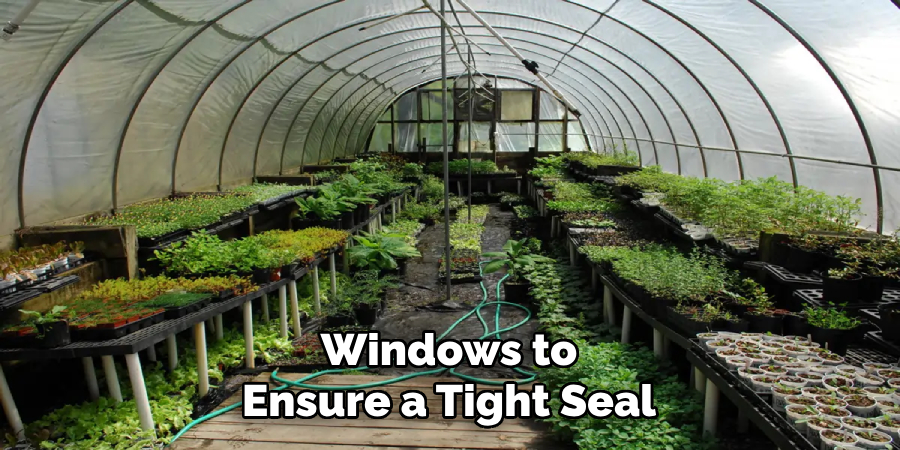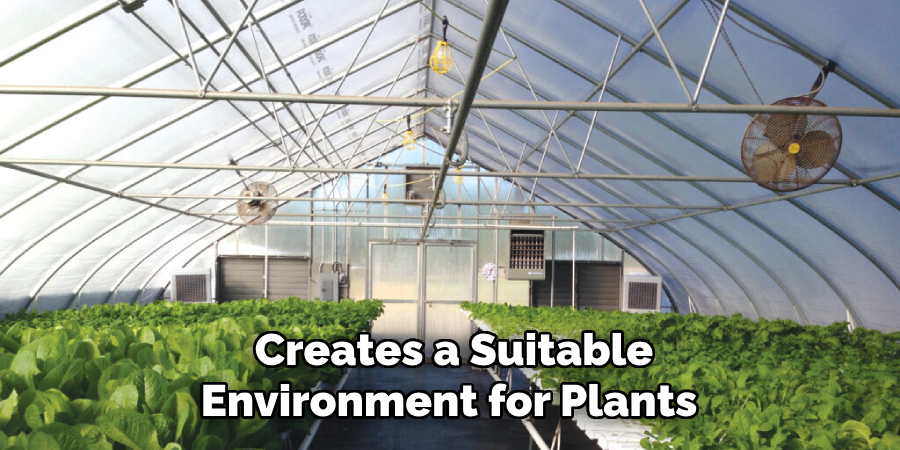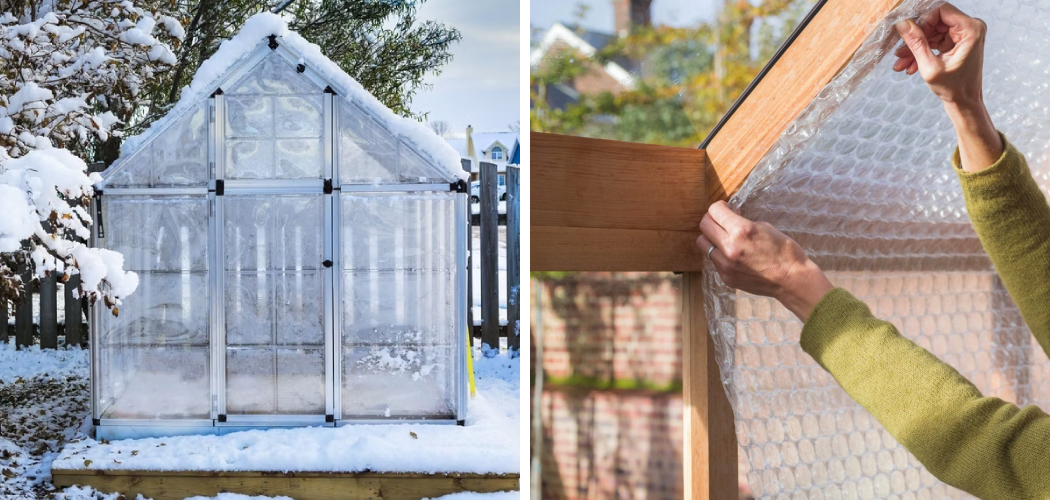To insulate a greenhouse for winter, use materials such as bubble wrap or polyethylene film on the walls and roof. Additionally, apply weather stripping to doors and windows, and consider using a portable heater or heat mats to maintain a suitable temperature.
Introducing insulation to your greenhouse during the winter months is crucial for the survival of your plants and the overall productivity of your garden. Without proper insulation, the cold weather can adversely impact the temperature inside the greenhouse, leading to frost damage or even plant death.
Fortunately, insulating a greenhouse is a relatively straightforward process that can help maintain a stable and favorable environment for your plants. In this article, we will explore different methods you can use to insulate your greenhouse for winter, ensuring that your plants remain healthy and well-protected during the colder months.

Understanding The Importance Of Greenhouse Insulation
Insulating a greenhouse for winter is crucial to maintain the warmth and protect your plants. Without proper insulation, cold drafts can enter the greenhouse and cause fluctuations in temperature, which can be damaging to delicate plants. Insulation helps to regulate the temperature inside the greenhouse by preventing heat loss and reducing the impact of cold weather.
By creating a barrier between the inside and outside environment, insulation ensures that the greenhouse remains a favorable growing environment throughout the winter months. Furthermore, insulating your greenhouse can help you save energy and reduce heating costs. It also extends the growing season, allowing you to cultivate plants even during the colder months.
Overall, the benefits of greenhouse insulation during winter cannot be overstated, making it an essential step in winterizing your greenhouse.
How Do You Insulate a Greenhouse for Winter: Step by Step Guide
Choosing The Right Insulation Materials
Insulating a greenhouse for winter requires careful consideration of the right materials. Factors to keep in mind when selecting insulation include efficiency, durability, and cost. Numerous options are available for greenhouse insulation, each with its own pros and cons. Some common materials include bubble wrap, polycarbonate sheets, fiberglass, and double-walled plastic.
Bubble wrap is inexpensive and easy to install, but it may not provide adequate insulation in colder climates. Polycarbonate sheets are durable and offer good insulation properties, but they can be costly. Fiberglass is another option, known for its excellent insulation capabilities.
Double-walled plastic is an affordable choice, but it may not offer as much insulation as other materials. Ultimately, the right insulation material depends on the specific needs of your greenhouse, such as temperature requirements and budget. Understanding the advantages and disadvantages of different options can help you make an informed decision.
Insulating The Greenhouse Structure
Insulating a greenhouse for winter involves examining its structure for potential heat loss areas. Insulation should be applied to the walls, roof, and floor to prevent heat from escaping. It’s also crucial to ensure that doors and windows have appropriate insulation to minimize drafts.
By addressing these areas, you can create a more energy-efficient greenhouse environment, allowing plants to thrive even in colder temperatures. Good insulation helps retain heat, reduces heating costs, and protects delicate plants from frost damage. Consider using materials like bubble wrap, polyethylene sheets, or fiberglass insulation to insulate the greenhouse effectively.
Maintaining a warm and stable environment in your greenhouse during winter is essential for successful plant growth and preservation. So, make sure to insulate your greenhouse adequately to provide optimal conditions for your plants throughout the winter season.
Enhancing Heat Retention Inside The Greenhouse
Insulating a greenhouse for winter is crucial for enhancing heat retention inside. Passive solar heating techniques should be implemented to maximize efficiency. Thermal curtains or blankets can be installed to retain heat effectively. Another option is using insulating covers or bubble wrap on plants to prevent heat loss.
These measures work by creating a barrier between the interior and exterior, trapping warmth inside. By properly insulating the greenhouse, you can create a conducive environment for plants to thrive during the colder months.
Regulating Temperature And Humidity Levels
Regulating temperature and humidity levels in a greenhouse during winter is crucial. Proper ventilation and air circulation play a significant role in maintaining the ideal temperature. You can use heaters and heating systems to control the temperature effectively. Humidifiers and misting systems, on the other hand, help you keep the humidity level in check.
These systems work together to create a balance that allows your plants to thrive even in cold weather. By implementing the right techniques, you can insulate your greenhouse efficiently and provide a suitable environment for your plants throughout the winter season.
Preventing Heat Loss Through Adequate Sealing

Sealing gaps, cracks, and drafts in the greenhouse structure is crucial to prevent heat loss during winter. Weatherstripping should be applied to doors and windows to ensure a tight seal. Regular inspection and maintenance of seals are necessary to identify any potential leaks and fix them promptly.
By addressing these gaps and cracks, you can significantly reduce the amount of heat that escapes from the greenhouse. This not only helps in conserving energy but also creates a more stable and favorable environment for your plants during the colder months.
Insulating your greenhouse properly is essential to protect your plants from extreme temperatures and maintain an optimal growing environment throughout the winter season.
Protecting Plants From Frost And Cold Damage
Insulating a greenhouse for winter requires implementing frost protection measures, like using frost cloths or blankets. It’s crucial to create a microclimate within the greenhouse to protect sensitive plants. Additional heat sources, such as heating mats or cables, can provide the necessary warmth.
By following these steps, you can safeguard your plants from frost and cold damage during the winter season.
Monitoring And Managing Energy Consumption
Insulating a greenhouse for winter requires careful monitoring and management of energy consumption. One effective strategy is to implement energy-saving practices for greenhouse heating. By using thermostats and timers, you can ensure efficient energy management. Additionally, calculating and optimizing heating requirements based on the size of the greenhouse is crucial.
This allows you to provide adequate warmth while minimizing energy waste. Monitoring and managing energy consumption in your greenhouse will not only help maintain a conducive environment for plants but also reduce energy costs. Implementing these energy-saving strategies is essential for the successful winter insulation of your greenhouse.
Frequently Asked Questions On How Do You Insulate A Greenhouse For Winter
What Are The Benefits Of Insulating A Greenhouse For Winter?

Insulating a greenhouse for winter provides several benefits, such as maintaining a constant temperature, preventing frost damage to plants, and reducing heating costs. It creates a suitable environment for plants to thrive during colder months, extending the growing season.
What Materials Can Be Used To Insulate A Greenhouse For Winter?
A variety of materials can be used to insulate a greenhouse for winter. Common options include bubble wrap, polycarbonate panels, thermal blankets, or double-glazed glass. Each material offers different levels of insulation and cost-effectiveness, so choose based on your specific needs and budget.
How Can I Effectively Seal My Greenhouse To Prevent Heat Loss?
To effectively seal your greenhouse and prevent heat loss during winter, you can use weatherstripping on doors and windows, apply caulking around gaps or cracks, and install insulation strips. Ensure that all openings are tightly sealed to keep the warm air inside and the cold air out.
Is It Necessary To Install A Heating System In A Winter Greenhouse?
The need for a heating system in a winter greenhouse depends on various factors, including the climate in your location, the type of plants being grown, and the insulation methods used. In colder regions or for delicate plants, a heating system may be necessary to maintain optimal temperatures and promote plant growth.
Can I Use Alternative Heat Sources To Keep My Winter Greenhouse Warm?
Yes, there are alternative heat sources you can use to keep your winter greenhouse warm. These include electric heaters, propane heaters, wood-burning stoves, or solar-powered heating systems. Select a heat source that suits your greenhouse size, budget, and energy requirements.
Are There Any Maintenance Tasks Involved In Insulating A Greenhouse For Winter?
Yes, there are maintenance tasks involved in insulating a greenhouse for winter. These may include regularly checking for gaps or leaks, replacing any damaged insulation materials, cleaning the greenhouse to prevent obstructions, and monitoring the effectiveness of the insulation throughout the season.
Proper maintenance ensures optimal winter performance.
Conclusion
To keep your greenhouse warm and thriving during the winter months, insulating it effectively is crucial. By following the tips provided in this blog post, you can ensure that your plants are protected from the harsh cold and frost. Start by choosing the right insulation material for your greenhouse, such as bubble wrap or thermal curtains.
Remember to seal any gaps and cracks to prevent heat loss. Additionally, utilizing a heater or insulating the floor can provide extra warmth. Regular monitoring of the temperature and humidity levels inside the greenhouse will help you make any necessary adjustments.
Finally, don’t forget to consider the location and orientation of your greenhouse for maximum insulation. With these techniques in place, you can create a cozy haven for your plants, extending their growing season throughout winter. So, put these ideas into action and enjoy a vibrant greenhouse all year round.

